In reality, answering this question is more complex than it may initially seem. Determining the precise size of stars proves to be an extremely challenging task, as it relies on a plethora of indirect information due to the inability to directly observe their disks. Currently, direct observation of the stellar disk has only been accomplished for a few large and nearby supergiants, while there are millions of stars scattered across the sky. Consequently, identifying the largest star in the Universe is far from straightforward, as calculations become the primary source of information.
Furthermore, certain stars possess a blurred boundary between their surface and an immense atmosphere, making it difficult to discern where one ends and the other begins. Moreover, this margin of error spans not just hundreds, but millions of kilometers.
Many stars exhibit variations in their diameter, pulsating and expanding and contracting. Their diameter can undergo significant changes.
Furthermore, scientific advancements continue to be made. More precise measurements are being taken, distances and other parameters are being refined, and certain stars are proving to be more intriguing than previously thought. This also applies to their size. Let’s explore a few potential contenders that rank among the largest stars in the Universe. It is worth noting that, by cosmic standards, these stars are relatively close and they are also the largest stars within our Galaxy.
VV Cepheus: A Massive Red Hypergiant
VV Cepheus is a remarkable red hypergiant that boasts to be one of the largest stars in the Universe. While it may not hold the title for the absolute largest star, it certainly comes very close.
This star system is classified as an eclipsing variable star, which means it consists of a double star. In the case of VV Cepheus, the giant component, known as component A, is the star of interest. The second component, a blue star, is relatively unremarkable in comparison, measuring about 8 times the size of our Sun.
What sets VV Cepheus apart is its pulsating nature. It undergoes regular pulsations with a period of approximately 150 days. During these pulsations, its size can range anywhere from 1,050 to an incredible 1,900 solar diameters. At its maximum size, VV Cepheus shines an astonishing 575,000 times brighter than our sun!


Visualizing the vast difference in size between the Sun and various larger stars, such as VV Cepheus, can be truly awe-inspiring. Despite being located 5000 light years away, VV Cepheus still manages to shine brightly in the night sky, with a brightness of 5.18 m. This means that on a clear night and with good eyesight, it is possible to spot this star, and even with the help of binoculars, it becomes an easy target.
Shields’ UY
This crimson hypergiant is equally remarkable for its immense proportions. Several online sources deem it the most colossal star in existence. It falls under the category of semi-regular variables and displays pulsations, resulting in a fluctuating diameter of 1708 to 1900 times that of our Sun. Just imagine a star that is 1,900 times larger than our Sun! Placing such a celestial body at the heart of our solar system would mean that all the planets, including Jupiter, would be engulfed within its vast expanse.
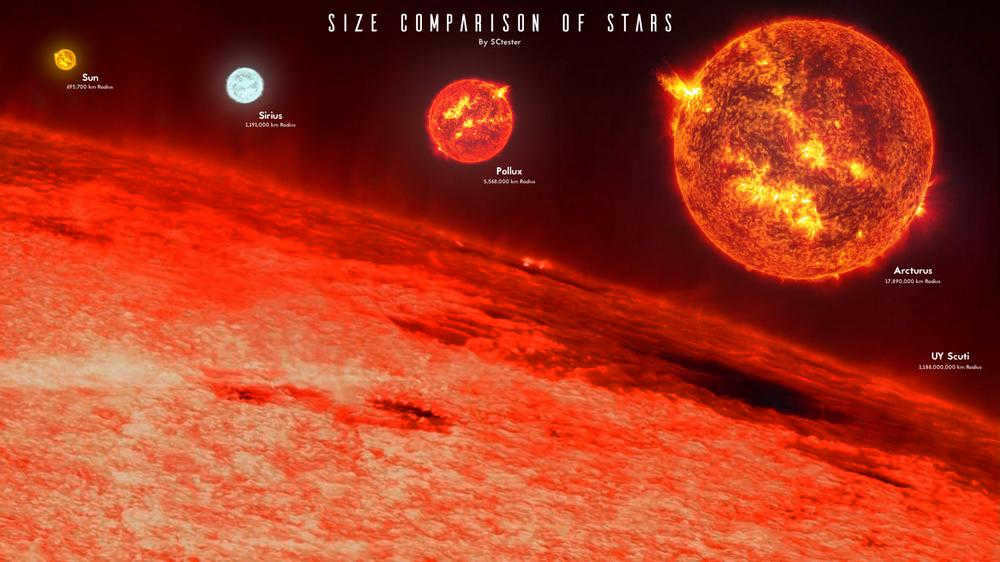
The UY Shield, with the Sun, Sirius, Pollux, and Arcturus in the background, is believed to be the largest star in the entire Universe.
In terms of size, this particular star is estimated to have a diameter of 2.4 billion kilometers, which is equivalent to 15.9 astronomical units. To put it into perspective, it could easily contain 5 billion suns within its massive structure. Despite its lower surface temperature, the UY Shield shines 340,000 times brighter than our own Sun thanks to its significantly larger surface area.
When it reaches its highest point, UY Shield appears as a dim reddish star with a brightness rating of 11.2 m. This means that it can be observed using a small telescope, but it is not visible to the naked eye. The reason for this is that UY Shield is located at a distance of 9500 light-years, making it impossible to see without the aid of a telescope. Additionally, there are dust clouds positioned between us and UY Shield. If these dust clouds did not exist, UY Shield would be one of the brightest stars in our sky, despite its significant distance.
UY Shield is an enormous star. It can be compared to another star called VV Cepheus, which was previously considered the largest star. At their maximum size, UY Shield and VV Cepheus are roughly the same, and it is difficult to determine which one is larger. However, there is another star that is even bigger than both of them.
VY, the Enormous Canine
The size of VY, the Enormous Canine, according to certain data, is estimated to be between 1800-2100 times the size of our Sun, making it one of the largest red hypergiants in existence. In fact, if this star were positioned at the center of our solar system, it would consume all of the planets, including Saturn. Even the previous contenders for the title of the largest stars in the Universe would be completely engulfed by VY.
It takes a mere 14.5 seconds for light to encircle our Sun completely. However, if light were to orbit VY, the Enormous Canine, it would require a staggering 8.5 hours. To travel that distance along the surface in a fighter jet, maintaining a speed of 4500 km/h, would take an uninterrupted journey spanning 220 years.
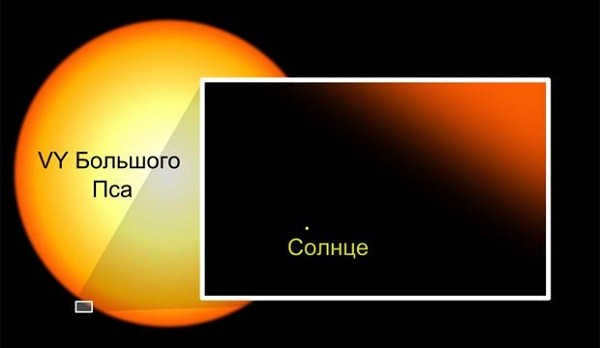
A comparative analysis of the magnitude of the Sun and the massive celestial body known as VY Big Dog.
This particular star continues to elicit numerous inquiries, primarily due to the challenges associated with accurately determining its size. This difficulty arises from the blurred corona surrounding VY Big Dog, which possesses a significantly lower density than that of the Sun. It is worth noting that the star itself is thousands of times less dense than the air we breathe.
Furthermore, VY Big Dog is currently undergoing mass loss and has given rise to a discernible nebula encircling it. It is plausible that this nebula may contain a greater quantity of matter than the star itself. Additionally, the star’s inherent instability is anticipated to culminate in a hypernova explosion within the next 100,000 years. Fortunately, given its location approximately 3900 light years away, Earth is not at risk from this cataclysmic event.
Enthusiasts can spot this celestial body in the night sky using binoculars or a small telescope, as its brightness fluctuates between magnitudes 6.5 and 9.6.
Stevenson 2-18
This celestial body is the largest known star at present. It is also referred to as RSGC-18. Positioned in the constellation Shields within the Stevenson cluster, it derives its name from its location. The discovery of this cluster dates back to 1990, and it contains numerous red hypergiants, among which Stevenson 2-18 stands out. So, what type of star is it?
Being a red hypergiant, Stevenson 2-18 is situated at a considerable distance – 18900 light years away. Its radius is estimated to be around 2150 solar radii, surpassing all other contenders, or 10.04 astronomical units. If this star were to replace our Sun, all the planets up to and including Saturn would be engulfed by it. It could also accommodate 10 billion stars similar to our Sun.
With a surface temperature of 3200 K, Stevenson 2-18 emits approximately 440,000 times more radiation than the Sun due to its massive surface area.
What is the biggest star in the Universe?
In the past, UY Shields was widely regarded as the largest star in the Universe. However, the title of the largest star has now been taken by the hypergiant Stevenson 2-18. Although there are other similar clusters in the Shield constellation, each with its own red hypergiants, they remain relatively unexplored. It is possible that another star will be discovered among these clusters and claim the title of the largest star.
It should be noted that when discussing the entire Universe, it is more accurate to say that Stevenson 2-18 is the largest star in our Milky Way galaxy known to scientists at present. Until a larger star is found, Stevenson 2-18 retains its status as the largest star in the Universe.
Indeed, the configuration of Cepheus is reminiscent of a pentagon, albeit with an irregular shape. It covers a vast area of 587.8 square degrees, making it the 27th largest constellation in the celestial sphere. Notably, a portion of Cepheus lies within our Milky Way galaxy.
By definition, Cepheus is classified as a constellation of the Northern Hemisphere, where it shares its celestial neighborhood with other well-known stellar formations. Examples include Cassiopeia, Ursa Minor, Draco, Cygnus, and various others.
Furthermore, the proximity of Polaris to the constellation Cepheus has a significant impact on its detectability and visibility.
It has been discovered that the movement of the Earth’s axis causes a shift in the position of the North Pole towards Cepheus. This phenomenon is known as precession. Experts speculate that by the year 3100, the star Gamma in the constellation Cepheus will take on the role of Polaris.
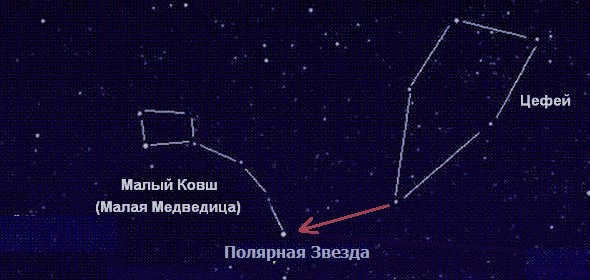
Story of the Cepheus Constellation
In ancient Greek mythology, there existed a ruler known as Cepheus. He was married to a beautiful queen named Cassiopeia. However, Cassiopeia was filled with pride and believed herself to be more stunning than the Nereids, who were the daughters of Nereus, the river god. Upon hearing this, the Nereids felt insulted and sought revenge by calling upon Poseidon, the god of the sea, to punish Cassiopeia. As a result, Poseidon sent a monstrous creature to Cepheus’ kingdom. The rest of the tale can be discovered here.
According to legend, Athena, the goddess of wisdom, transformed Cepheus into a constellation. Thus, the constellation is said to represent the ancient Greek ruler.
The constellations of Cepheus are home to some interesting stars
In reality, there are no particularly bright stars within this constellation. However, the most notable star is Alpha – Alderamine.
Beta – Alfirk is a variable star. What’s interesting is that this star has served as the archetype for a class of similar stars known as Cepheids. These stars have the unique ability to pulsate with a precise period dependence.
Furthermore, the region is home to three red supergiants that can even be observed without the aid of a telescope.
- Mu, also known as Herschel’s garnet star, is considered to be one of the most massive and powerful stellar objects in the Milky Way.
- Cepheus’ VV is expressed as a double star system.
- Kruger 60 is also a double star.
Additional items
While the Cepheus constellation may not be abundant in stars, it does feature a number of intriguing objects.
One such object found within Cepheus is the NGC 6951, a spiral galaxy. Despite its modest dimensions, it possesses remarkable beauty. Furthermore, it serves as a highly active stellar system.
Dispersed star clusters:
- NGC 188 is a group of stars and is considered one of the oldest scattered clusters in the Galaxy. Scientists estimate its age to be around 5 billion years.
- NGC 6939 is a stunning gathering of celestial bodies, situated between the constellations of Cepheus, Cygnus, and Draco.
- NGC 7142 is known for its abundance of faint and ancient stars, as well as hot supergiants. Interestingly, nearby you can find the Small Cluster Nebula and the Cosmic Rose. Additionally, this region is known for its rapid star formation.
- NGC 7160 consists of eight bright stars that form a shape resembling a bucket, often resembling a dolphin. The possibilities are endless.
- NGC 7226 is a small and faint cluster in the sky, which is why it is not easily visible. Its size is relatively small.
- NGC 7261 is situated in the western portion of the constellation. Despite being invisible to the naked eye, it contains nearly 100 stars.
- NGC 7380 is commonly known as an emission nebula. In the contemporary field of astronomy, it has earned the nickname “the Harry Potter Nebula – the Harry Potter and the Golden Snitch Nebula”. Perhaps its appearance reminded astronomers of the beloved wizard and his magical ball.
- NGC 7510 is positioned in the Cassiopeia region. According to scientific research, this cluster is comprised of approximately 80 stars. It is worth noting that they are scattered in a random fashion.
Nebulae
IC 1396 is a type of emission nebula, where the active process of star formation can be observed. What is particularly fascinating about this celestial region is that it is known by various names, one of them being the Elephant Trunk.
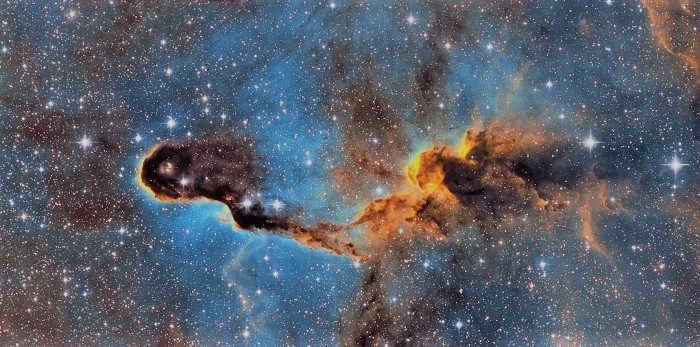
The Elephant Trunk Nebula
Known for its impressive size, the Elephant Trunk Nebula is a challenging object to spot in the night sky due to its small stellar magnitude.
NGC 7354 is a stunning planetary nebula that stands out for its beauty and brightness.
In the constellation Cepheus, you can also find NGC 7538, which goes by various names including the Northern Lagoon, the Head Brain, or the Dreyer Object. Despite not being widely known, it remains an intriguing nebula.
Another planetary nebula hiding within the constellation is NGC 40, also known as the Bow Tie Nebula. It is tucked away in the depths of Cepheus and is a fascinating celestial feature.
One must not underestimate the significance of the Iris Nebula (NGC 7023). It is a reflective area housing a dispersed group of celestial bodies. Incidentally, this nebula holds great renown among astronomers.
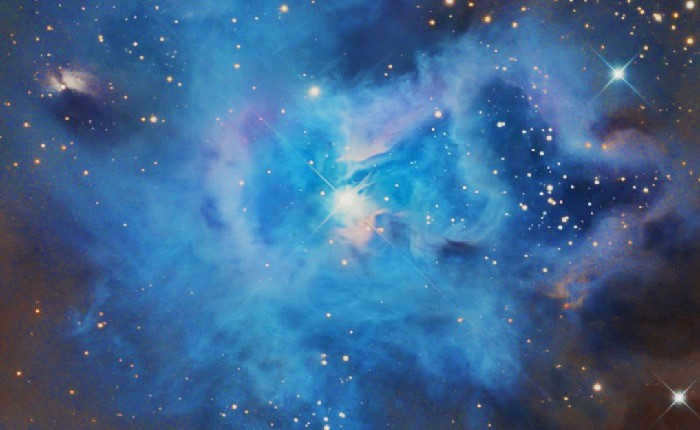
In the composition of the Cepheus constellation, there are numerous fascinating objects, as evidenced by the image above. Each of these objects possesses its own unique beauty, contributing to the overall incomprehensible and mysterious nature of our Universe.
When searching for the constellation Cepheus, one should focus on the regions between Cassiopeia and the Little Bear. Astronomers suggest that late summer and early fall are the optimal times for visibility.
Due to its prominent northern declination, the constellation can be easily seen from all parts of Russia. This fact holds great significance for observers in Russia.

The star known as M y Cepheus has a diameter of 2,300 million kilometers and a surface temperature of 2,000 °C. It is located at a distance of 5,200 light years from Earth and has a rotational velocity of 20.63 kilometers per second. The star is relatively young, with an age of 11-12 million years. Its visible stellar magnitude ranges from 3.43 to 5.09, and its absolute stellar magnitude ranges from -7.61 to -5.95. M y Cepheus belongs to the constellation Cepheus and has a spectral class of M2Ia.

Slide 3: The Story of Cepheus Constellation
In ancient Greek mythology, there once lived a king named Cepheus. He was married to a beautiful woman named Cassiopeia, who was known for her pride and believed she was more beautiful than the Nereids, the daughters of Nereus, the god of rivers. Offended by her arrogance, the Nereids sought the help of Poseidon, the god of the seas, to punish Cassiopeia. As a result, Poseidon sent a monster to Cepheus’ kingdom. The full story of what happened can be found here. However, according to legends, Athena, the goddess of wisdom, turned Cepheus into a constellation. Therefore, this constellation is believed to symbolize the ancient Greek ruler.
Slide 4: Traits of the celestial body Mu Cepheus
Slide 5: When and where can you observe the Cepheus constellation?
Due to its close proximity to the North Pole, the constellation Cepheus remains visible throughout Russia. It can be seen high overhead during fall evenings, low in the northwest-northern part of the sky during winter evenings, low in the north-northeastern part of the sky during spring evenings, and high in the northeastern part of the sky during summer. If you’re somewhat familiar with the night sky map, you can locate Cepheus by navigating through its neighboring constellations: Ursa Minor, Cassiopeia, Lacerta, Draco, and Cygnus. Cepheus lacks bright stars, with only eight of them having a stellar magnitude greater than the fourth. However, on a clear moonless night, anyone can observe at least 60 stars within Cepheus. The best conditions for observing it in the southern hemisphere occur between July and September. Nevertheless, due to its strong inclination towards the north, Cepheus is clearly visible throughout the entire territory of Russia throughout the year. This constellation covers a modest area of 588 square degrees in the sky. An interesting fact is that in the near future, the world’s North Pole will shift to the constellation Cepheus. This phenomenon is explained by the Earth’s axis precession, which is moving in the direction of the described constellation. Therefore, by the year 3100, the star Gamma Cepheus (or Alrai) will take the position near the pole. Beta Cepheus (or Alfirk) will approach the North Pole between 5100 and 6500 AD, and by 8300 AD, the star Alpha Cepheus (or Alderamin) will assume the role of the polar star.
Cepheus (Latin: Cepheus) is a constellation in the sky of the Northern Hemisphere. It has the shape of an irregular pentagon and is situated partially on the Milky Way. Cepheus covers an area of 587.8 square degrees and contains 148 stars that can be seen without the aid of a telescope.
Due to precession, the North Pole of the Earth will gradually shift towards Cepheus. Around the year 3100, the star Alrai (γ Cep) will be near the pole. From 5100 to 6500, Alfirk (β Cep) will be closer to the pole, and starting from 8300, the star Alderamin (α Cep) will take on the role of the North Pole star.
Background
The legendary ruler of Ethiopia, Cepheus, was the husband of Cassiopeia and the proud parent of Andromeda.
Overview
Elaborate Explanation
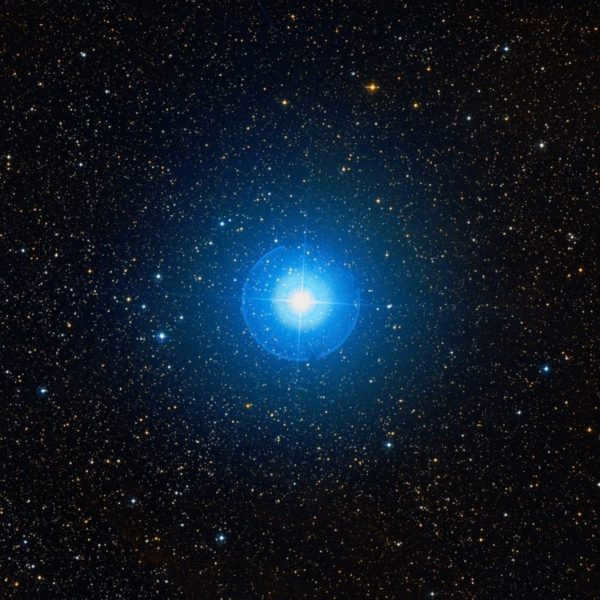
Cepheus constellation is home to some of the most prominent stars and celestial objects in the night sky.
Within this constellation, you can find the third and fourth largest stars, as well as a plethora of double and variable stars.
Learn about Mu Cepheus
Mu Cepheus is a triple star system. In addition to its primary star, there are two other components: mu Cepheus B, with a magnitude of 12.3m, and mu Cepheus C, which has a magnitude of 12.7m. It’s important to note that mu Cepheus is currently in the final stages of its evolution.
The process of helium burning has already commenced, resulting in its subsequent conversion into carbon, providing undeniable proof of its demise. It is highly probable that within the coming million years, it will undergo an explosive event, leading to the formation of a supernova, and potentially giving rise to a massive core capable of forming a black hole.
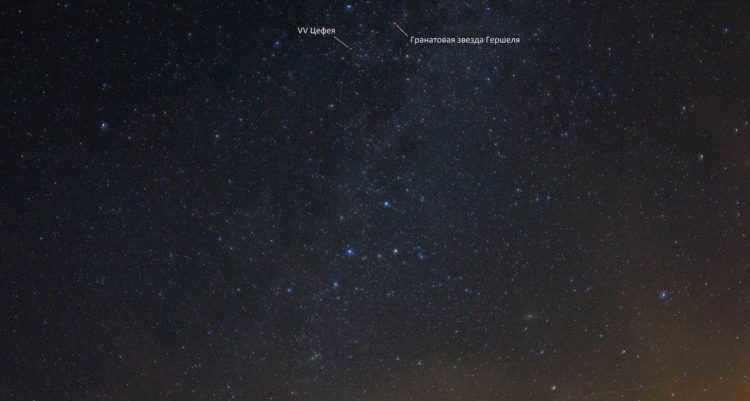
According to the data available, the star Kruger 60 is made up of two components, namely A and B. Component A has a mass that is approximately 27% of the solar mass, and its radius is about 35% of the solar radius. On the other hand, component B has a mass of 18% of the solar mass and a radius of 24% of the solar radius. The average distance between Kruger A and Kruger B is around 9.5 astronomical units, which is roughly equivalent to the distance between Saturn and the Sun. However, it should be noted that the orbit of the star Kruger 60 is slightly eccentric, causing the specified distance to fluctuate between 5.5 and 13.5 astronomical units.
The celestial bodies within the Cepheus constellation
The legend of the star grouping Cepheus
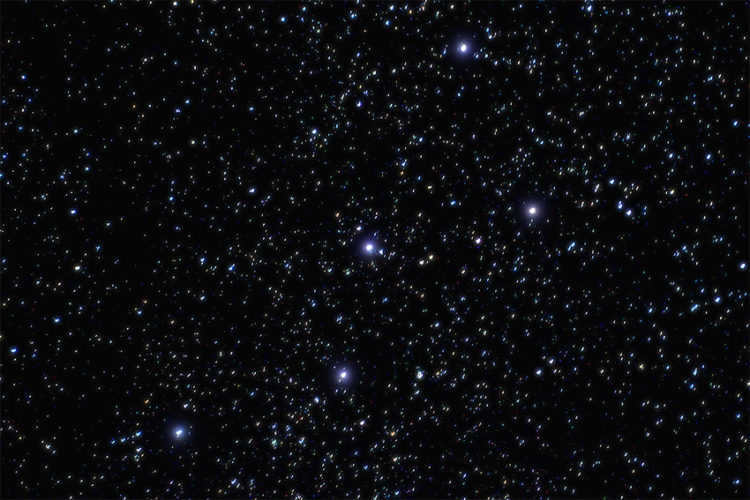
This is the tale of King Cepheus of Ethiopia, whose wife was the stunning yet arrogant Cassiopeia. One fateful day, she declared that her beauty surpassed that of all the nerids (nymphs). Offended by her boastful claim, the nerids beseeched Poseidon for retribution. Poseidon heeded their plea and dispatched the monstrous Cetus to lay waste to the kingdom.
In light of the dire circumstances, the oracle counseled the king to offer up his daughter Andromeda as a sacrifice. Complying with the oracle’s guidance, the king made the heart-wrenching decision, but just as Andromeda was about to meet her tragic fate, Perseus swooped in to save her. Overwhelmed with gratitude, they resolved to wed. However, their joyous union was interrupted by the arrival of Phineas, who also laid claim to Andromeda’s hand. A fierce battle ensued, with Perseus finding himself outnumbered. Yet, undeterred, Perseus unleashed the power of the Gorgon Medusa’s severed head. Cepheus and Cassiopeia, unable to avert their gaze, were transformed into statues of stone.
In Southeast Asia, the people had a beautiful legend that connected the constellations of Cepheus and the Big Dipper. According to this legend, the constellation Cepheus was said to immortalize the charioteer of an ancient emperor. The charioteer, on his magnificent chariot, would transport the empress to the distant mountain of immortality called Kuen-Lun. This mountain was believed to be located at the very center of the Earth.
On Kuen-Lun, there existed a wondrous garden that belonged to the Mistress of Immortal Gods and Earth. This magical garden was filled with fairy trees and was always abundant with various fruits, regardless of the season. However, the most extraordinary tree in this garden was the peach tree. Its fruits were said to possess divine powers that could extend the lifespan of anyone who consumed them.
Once every three thousand years, the Mistress of the enchanting garden extended an invitation to the gods and select mortals to partake in the divine fruits of immortality. On this auspicious day, the charioteer expertly harnessed eight spirited horses to the chariot, while the empress gracefully took her seat. Together, they soared through the heavens towards the enchanting garden. As the empress and the charioteer tasted the fruits of immortality, they became untethered from the constraints of time and felt no desire to return to the mortal realm… They vanished from the Earth, leaving no trace behind.
However, the charioteer did not remain in the magical garden. With his chariot, he ascended to the celestial realm, where the gods transformed him into the constellation Cepheus, and his chariot into the constellation of the Big Dipper. Henceforth, on every clear night, people from all corners of the Earth gaze upon the immortal charioteer (Cepheus constellation) and his chariot (Big Dipper constellation) as they adorn the night sky.
When and where can you see the Cepheus constellation?
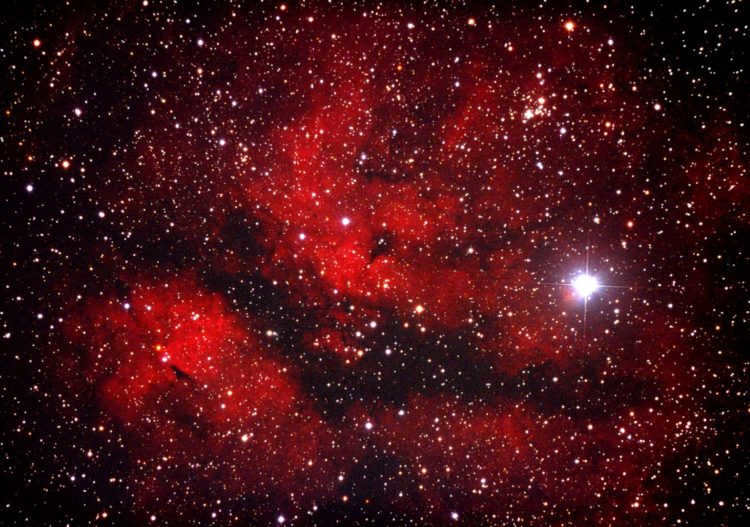
Due to its close location to the North Pole, the constellation Cepheus remains visible throughout Russia. It can be observed in the autumn nights at a high position, in the winter nights at a low position in the northwest-northern sky, in the spring nights at a low position in the north-northeastern sky, and in the summer nights at a high position in the northeastern sky.
This constellation covers a modest area of 588 square degrees in the sky. An intriguing fact: in the future, the world’s north pole will shift within the constellation Cepheus. This occurrence is due to the precession of the Earth’s axis aligning with the mentioned constellation. Therefore, by the year 3100, the star gamma Cepheus (or Alrai) will assume a position near the pole. Beta Cepheus (or Alfirk) will approach the north pole between 5100-6500 AD, and by 8300 AD, the role of the polar star will be taken over by alpha Cepheus – the star Alderamin. Let us now delve into the fascinating stars within this constellation.
Watch the video
Planetary systems are dwarfed by the largest stars in the Universe, which are a thousand times the size of the Sun. These colossal giants are so massive that they can reach the size of entire solar systems. Several of the stars featured in the top ten list can even be observed in the night sky.
UY Shields is a colossal red supergiant star that holds the distinction of being the largest known star in the universe. Nestled within the Shields constellation in the southern hemisphere, this celestial giant commands attention.
With a diameter reaching a staggering 4 billion kilometers, UY Shields dwarfs our own sun by a factor of 1700. To put it into perspective, its diameter is equivalent to 16 astronomical units, which is the distance from our Earth to the Sun.
Located a whopping 9,500 light years away from us, UY Shields presents itself to us as it appeared 9,500 years in the past. The sheer magnitude of this star is awe-inspiring.
If we were to hypothetically place this supergiant at the center of our solar system, it would extend all the way to the orbit of Uranus, the second-to-last planet in our system. Its volume is an astonishing 5 billion times greater than that of our Sun.
The constellation Shield, which contains a massive star, is observable in Kazakhstan during the summer. One can locate the constellation by looking for its neighbor, the Eagle constellation, which has the prominent star Altair. However, to observe the Shield constellation, one would require binoculars or a telescope. Given the light pollution from surrounding city lights, a telescope would be necessary.
Despite its size, the star appears faint. This is attributed to the extensive gas cluster that lies between the star and Earth. Without this hindrance, UY of the Shield would be among the most brilliant objects in the night sky.
The Enormous VY Canis Majoris
VY Canis Majoris is a gigantic star that is 1,400 times larger than the Sun. Despite its massive size, it has a surprisingly low density, making it only 17 times heavier than the Sun. This makes VY Canis Majoris close to the Hayashi limit, which is the maximum size a star can reach.
In addition to its size, VY Canis Majoris is also unique in its composition. It is rich in oxygen, yet it remains incredibly light, with a density lower than that of air. If this massive star were placed at the center of our solar system, it would extend all the way to the orbits of Jupiter or Saturn. Currently, VY Canis Majoris is still expanding and has already reached a volume that is 3 billion times larger than the Sun.
VY Canis Majoris is located approximately 3,900 light years away from Earth. However, this supergiant star is not stable and has already shed most of its mass into the surrounding cosmic space. In the next 100,000 years, it will face one of two catastrophic scenarios:
- It is predicted that the star will undergo a catastrophic event known as a supernova, resulting in a powerful explosion that will release an immense amount of energy. This explosion will have a cosmic impact and sterilize the surrounding space with gamma rays, extending over a vast distance of light years.
- As the star reaches the end of its life cycle, it will collapse into a black hole, exerting a gravitational force that will attract and absorb surrounding matter.
To observe this colossal phenomenon in the night sky, one should look towards the constellation of the Big Dog during the winter season. The Big Dog can be located to the right of the Orion constellation, with VY of the Big Dog positioned below and to the left of Sirius.
WOH G64.
WOH G64 stands out as the third most sizable star in the observable universe. It falls under the classification of a red supergiant. Positioned in the Goldfish constellation in the southern hemisphere, this star remains hidden from view in the RK. Its volume rivals that of other prominent stars and is estimated to be around 1,500 times the size of the Sun.
What sets this star apart is its remarkable feature of being encompassed by an enormous dust cloud in the shape of a torus. This massive “cosmic bagel” spans a distance that is 30,000 times greater than the Earth-Sun distance. Due to the cloud’s obstruction, the star’s luminosity is unnaturally diminished, resulting in a lack of visible light.
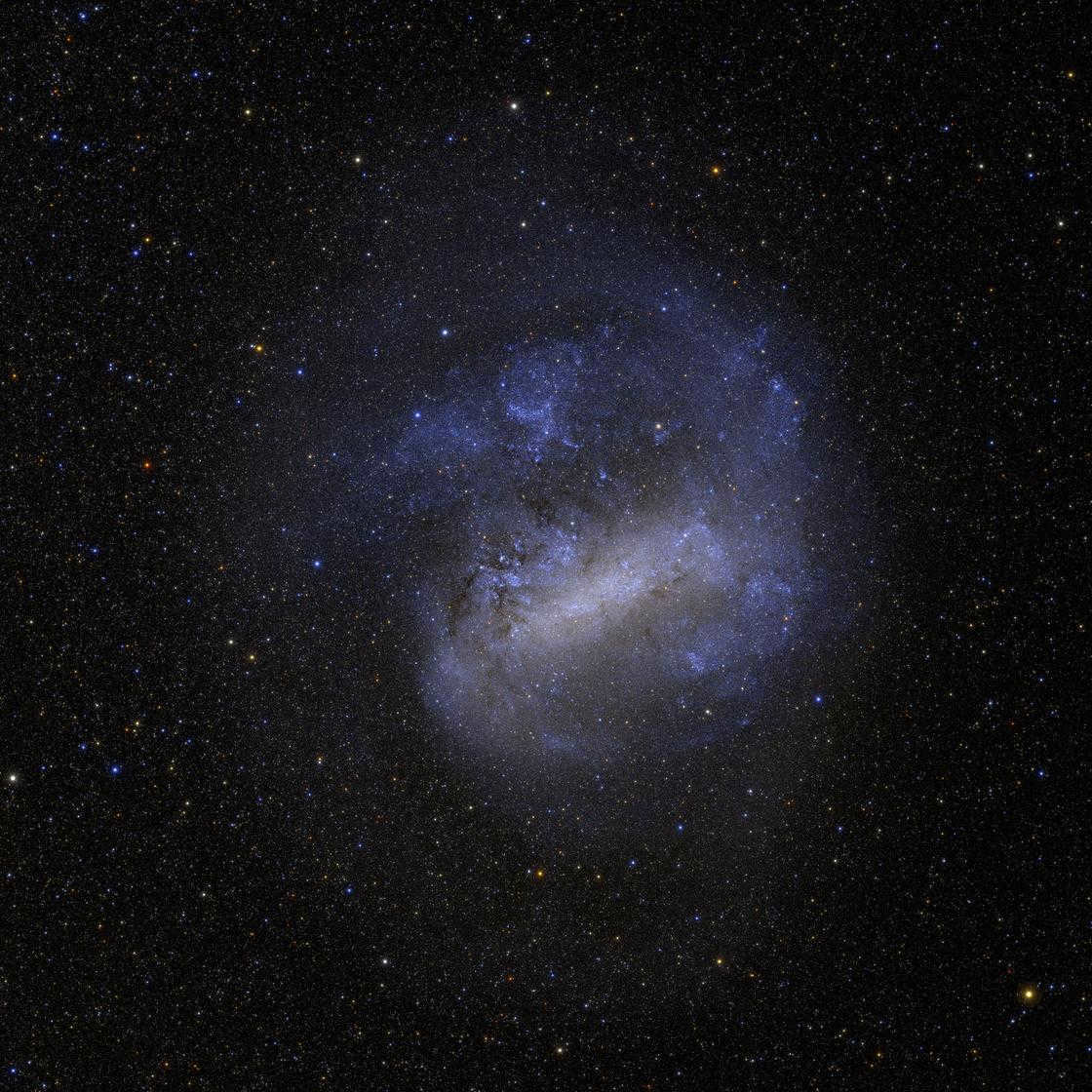
WOH G64, found in the Large Magellanic Cloud galaxy, was once more massive. It has lost up to 33% of its mass due to stellar wind formation, where the star’s matter leaks into space.
Located in the Large Magellanic Cloud, which is our neighboring galaxy, WOH G64 is approximately 163,000 light-years away. The light we currently observe from the star was emitted during the time of the Neanderthals on Earth.
VV Cephea is a binary star system with an eclipsing nature. It is comprised of two stars, namely Star A and Star B. Star A, which is the fourth largest star ever discovered, holds the third position in terms of size within our Milky Way galaxy.
Belonging to the category of red hypergiants, Star A surpasses the Sun in size by a factor of 1050-1900. Its luminosity is also significantly higher, exceeding the solar luminosity by 200-500 thousand times, while its mass is 25-100 times greater. Notably, Star A is gradually losing mass due to its stellar wind.
Orbiting around Star A is Star B, which takes approximately 20 years to complete a full revolution around its gigantic companion. Star B itself is of medium size, measuring only about 10 times the size of the Sun.
Sagittarius KW
The KW of Sagittarius is a red supergiant situated in the Sagittarius constellation. It is positioned approximately 9,800 light-years distant from the Sun and possesses a visible stellar magnitude of 9.35, rendering it undetectable to the unaided eye.
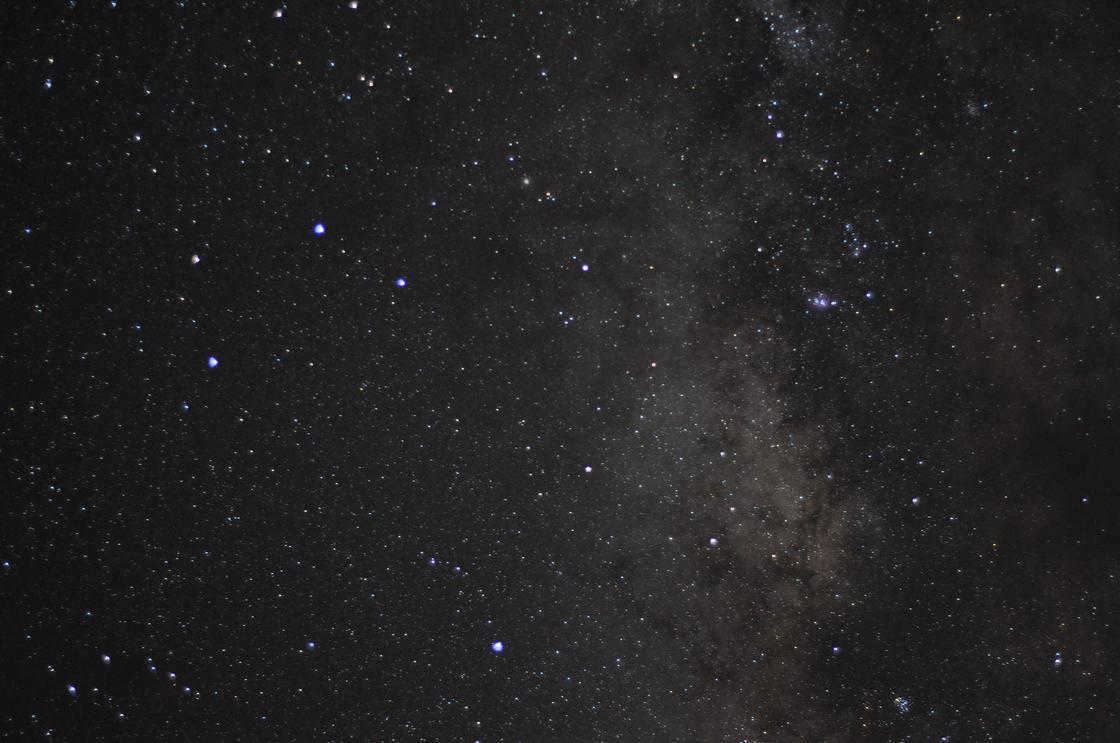
The star KW in the constellation Sagittarius can be found on Wikipedia.
Compared to the Sun, KW Sagittarius has an astonishing luminosity that is approximately 370,000 times greater. Additionally, its diameter is 1,460 times larger than that of our own star. If we were to replace the Sun with KW Sagittarius, its edge would extend to the point halfway between the orbits of Jupiter and Saturn.
V354 Cepheus
V354 Cepheus, situated in the constellation Cepheus in the Northern Hemisphere, is a red supergiant. It is positioned in the Milky Way and is located approximately 9000 light years away from Earth. If we were to place this star in the center of our solar system, it would extend its reach to the orbit of Jupiter, with an estimated size of 1 billion kilometers.
Despite having a luminosity 400,000 times greater than that of the Sun, V354 Cepheus cannot be observed with the naked eye due to its immense distance in the sky. However, with the aid of a telescope, one can marvel at this colossal star, located in the lower portion of the Cepheus constellation.
Mu Cepheus, also known as Herschel’s garnet star, is a red supergiant situated in the constellation Cepheus. This star is one of the most dominant ones within the Milky Way Galaxy. It stands out due to its enormous size, being 650 to 1420 times larger than our Sun.
Cepheus can be observed throughout the year in the RC, but it is most easily visible from August to January. Locating this constellation in the night sky is a straightforward task, as it is surrounded by prominent neighboring constellations. Cepheus can be found between Polaris, the well-known W-shaped Cassiopeia, and the cross-shaped or bird-like constellation Swan. Additionally, it is positioned just below the brightest star in the Alderaminus constellation.
V509 Cassiopeia
V509 Cassiopeia is a yellow hypergiant located in the constellation Cassiopeia. It is situated approximately 7,800 light-years away from our planet. This massive star is estimated to be 400 to 900 times larger than the Sun and 25 times more massive.
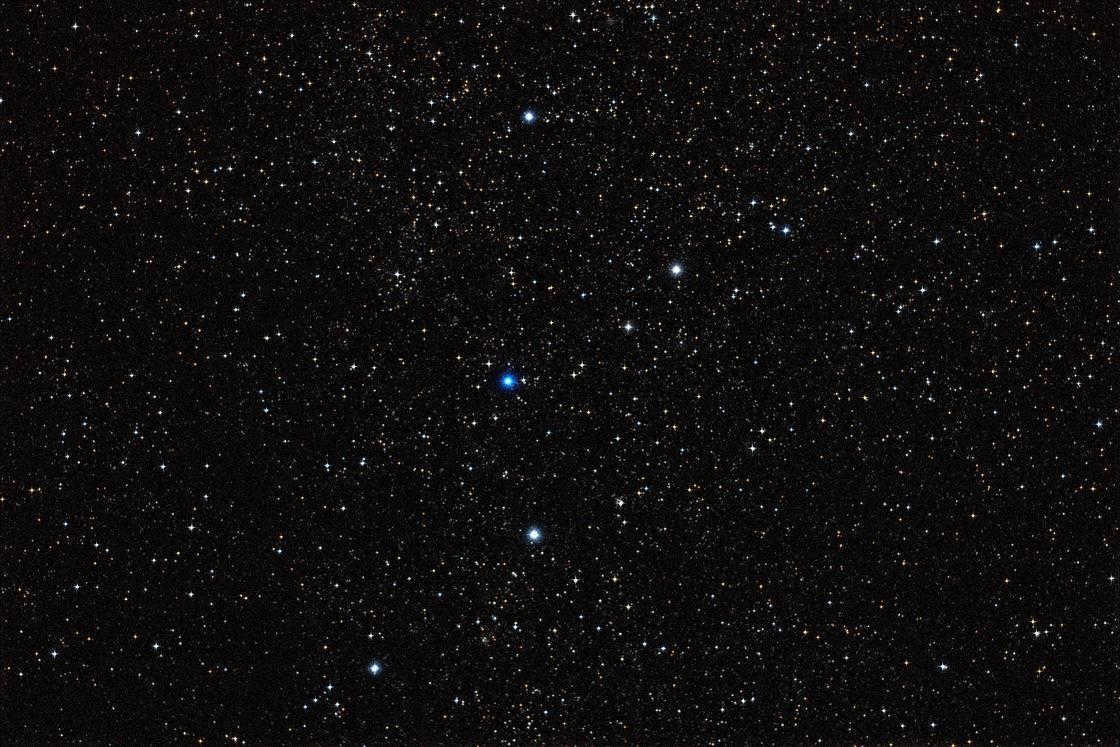
V509 in the Cassiopeia constellation: information from Wikipedia.
This star is visible to the naked eye. As Cassiopeia is a constellation in the northern hemisphere, people in the Republic of Korea can easily observe this giant star. Cassiopeia is simple to locate as it resembles the letter W. The top part of the W points towards the Little Bear and Polaris.
Betelgeuse
Betelgeuse, a red supergiant, is a prominent star visible in the night sky. Situated within the Orion constellation, Betelgeuse outshines the neighboring stars. This colossal celestial body dwarfs our Sun by a staggering factor of 650 to 800. To put it into perspective, if Betelgeuse were positioned at the center of our solar system, it would effortlessly engulf Mercury, Venus, Earth, and Mars.
Despite its immense size, Betelgeuse possesses a mass that is merely 17 times that of the Sun. Located at a distance of 500 to 600 light years away, this star serves as a captivating subject for astronomers and stargazers alike.
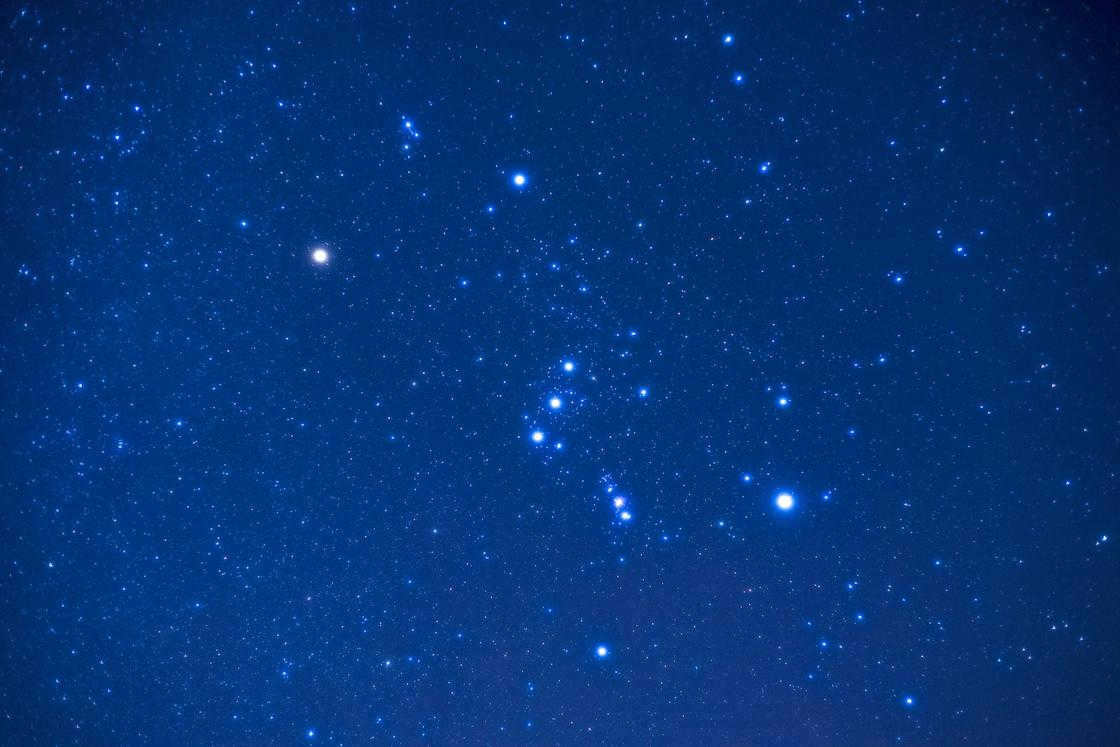
Betelgeuse in the Orion constellation: Pixabay
The star has various historical names:
All of them have translations that mean “hand” or refer to a part of it, because in the Orion constellation, Betelgeuse is located where the hand or shoulder of a mythological character would be.
The star is easily visible to the naked eye. It is best observed during winter, when the Orion constellation rises above the horizon. Betelgeuse is the star in the upper left of the constellation. Those with good eyesight will notice its reddish hue, indicating its giant size.
Antares
Antares is a red supergiant, one of the most luminous stars in the nighttime celestial sphere. It is in close proximity to our solar system, with an estimated distance of 600 light-years from the Sun. Antares is situated within Bubble I, which is a neighboring region of the Local Bubble. This region also encompasses other prominent stars such as Aldebaran, Alpha Centauri, Vega, Altair, Capella, and more.
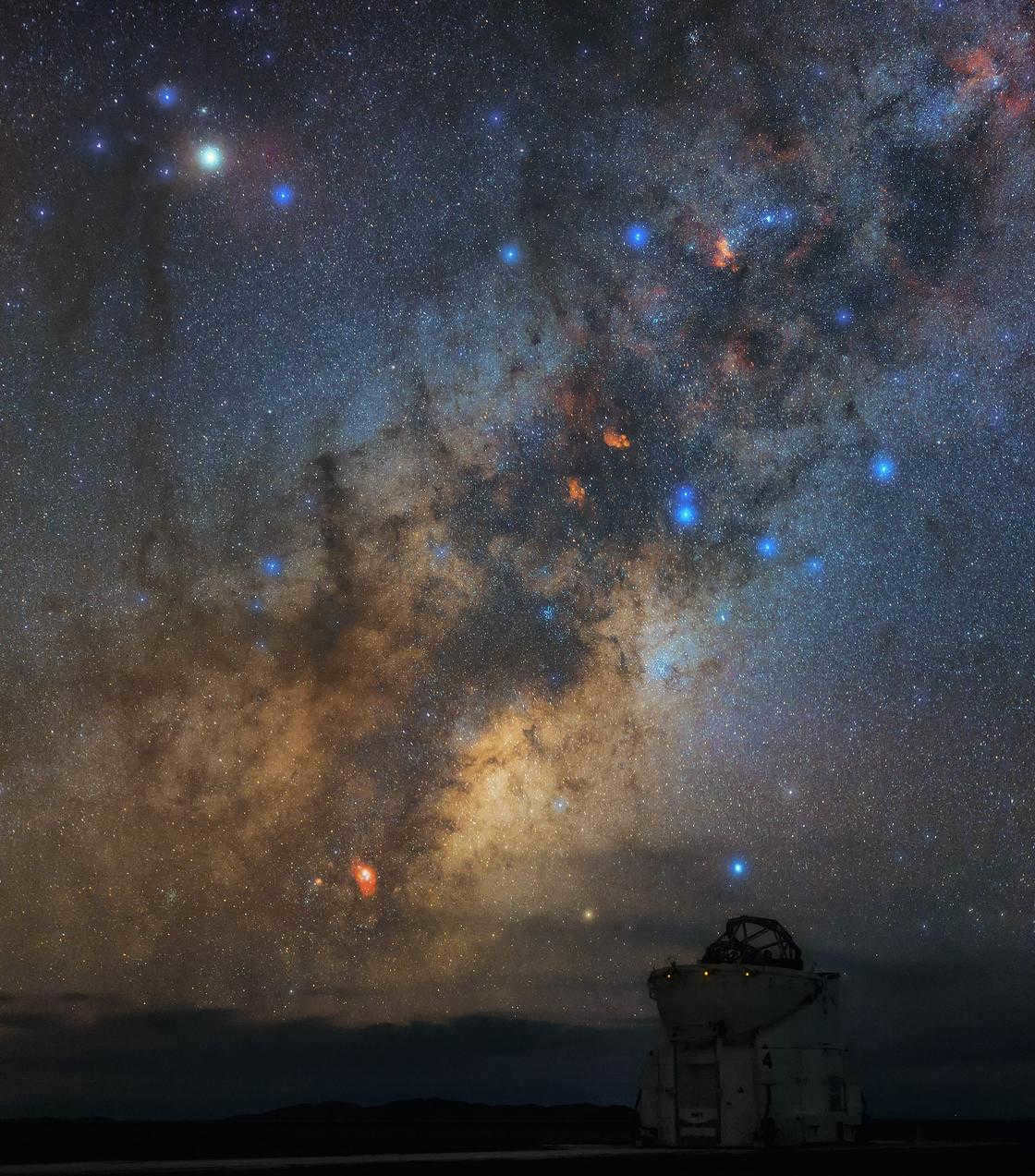
Antares, located in the Scorpius constellation, has been a well-known star since ancient times. In the ceremonies held at ancient Egyptian temples, the light of Antares played a significant role. It was also regarded as the royal star in ancient Persia and referred to as Kalb al-Aqrab (‘the heart of the scorpion’) in the Arab world.
Antares shines brightly due to its immense size, which is 400-600 times larger than the Sun, and its close proximity to Earth. If Antares were positioned at the center of our solar system, it would engulf everything up to Mars and its corona would even touch Jupiter. This star is easily visible during late spring and can be found within the Scorpius constellation.
When we consider the Sun in comparison to the vastness of the Universe, we realize that we are merely small inhabitants on a tiny planet. However, it is important to note that there are supergiants scattered throughout the Universe, making the Sun appear as nothing more than a humble yellow dwarf. Although it is impossible to fully comprehend the immense size of the Universe, gaining knowledge about these colossal celestial bodies can assist us in reevaluating our position as humans within this vast world.
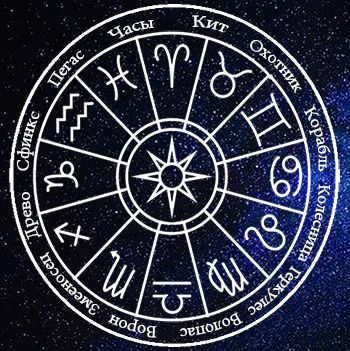
The border signs of the zodiac are referred to as the “Upper zodiac” and become apparent when the Sun moves from one Sign to another. This transition typically takes about 4-5 days.
The possessor of a border sign possesses the qualities of both signs, even though they may contradict each other. Individuals with border signs have contradictory natures and complex personalities, often inclined towards extremes in all aspects of life.
A border sign bestows its owner with immense energy, amplifies their intelligence, creativity, and charisma. It leaves a lasting impact on their destiny.
Signs of the Higher Zodiac and their Concise Description
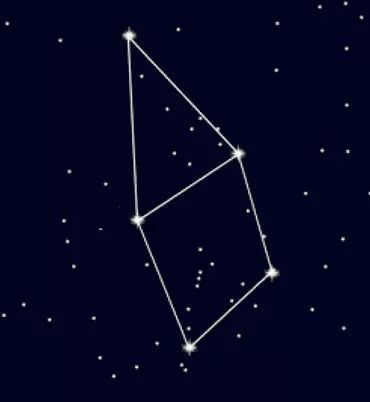
Hours Zodiac Sign
March 19 – 22: Time Period
Pisces and Aries Border
Elements: Water + Fire
The name of this zodiac sign is associated with the constellation Cepheus (derived from the Latin word “cepheus” meaning “number”), which can be found in the northern hemisphere of the night sky. Individuals born under the Hours sign are often given a second chance and are governed by the “clean slate” rule, allowing them to reset certain life events and start fresh.
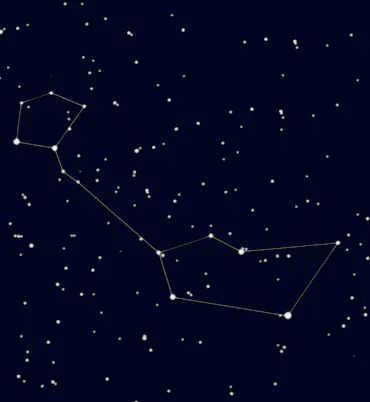
Zodiac Sign of the Whale
April 19 – 23: Whale
Aries and Taurus cusp
Elements: Fire + Earth
The whale represents the ability to absorb negativity and control chaos. Another interpretation of the whale is as the sea monster Leviathan, whose open mouth serves as the gateway to the underworld. The whale grants power over the elemental forces, providing the ability to both create and destroy.
Those born under the sign of the whale do not conform to strict rules and feel the need to blur boundaries. By harnessing the strategy of Earth, which channels the unbridled energy of Fire in a productive direction, they are able to avoid negative destruction. The ambitious nature of Aries is further enhanced by the steadfastness of Taurus, allowing Whales to typically achieve their goals.
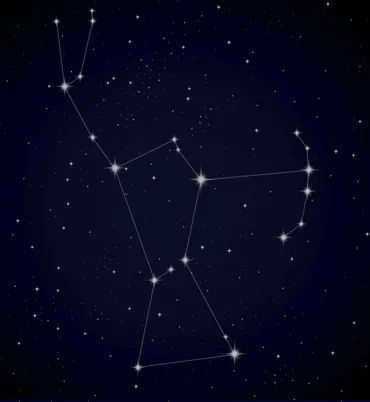
Zodiac Sign Hunter
May 19 – 23: Hunter
The boundary between Taurus and Gemini
Elements: Earth + Air
Hunter is another name for the Orion constellation, which is located on the border of these signs. Hunter’s path is filled with numerous possibilities and opportunities, but it also presents the challenge of making decisions. A single misstep can lead to unexpected outcomes, steering one away from their intended path.
Individuals who are born under the Hunter sign must possess the skills necessary to carefully plan their lives and make wise decisions, utilizing the strategic thinking of Taurus and the intellectual capabilities of Gemini. The Hunter’s tendency towards excessive activity, represented by the element of Air, should be counterbalanced by the grounding and stability provided by the element of Earth. It is crucial for every Hunter to take these factors into account in order to successfully follow through and accomplish their goals.
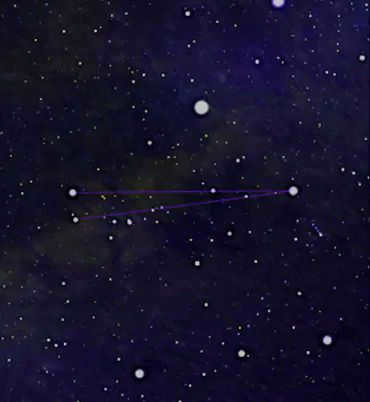
Zodiac Sign Ship
June 20 – 24: Ship
The cusp of Gemini and Cancer
Elements: Air + Water
The Ship represents one’s destiny and requires a skilled captain. Its purpose is to seek guidance, conquer challenges, and strive for one’s dreams. At times, it is the individual’s own fears that hinder their progress.
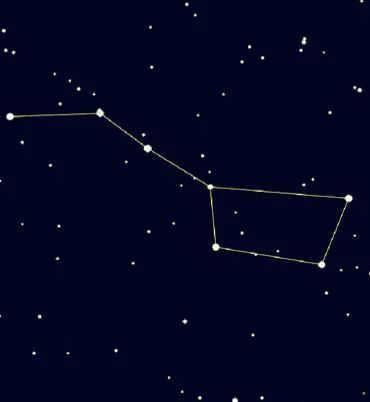
Zodiac sign Chariot
From July 20 to 24, individuals born under the sign of the Charioteer are situated on the border between Cancer and Leo. Their zodiac sign is a combination of the Water and Fire elements.
The Chariot sign is associated with the prominent constellation of the Big Dipper. In mythology, the chariot is a means of transportation for the gods, including Helios, the god of the Sun. Additionally, the chariot symbolizes heroism and warfare.
Those born under this sign possess both hidden and overt talents, one of which is the ability to lead and explore new territories. However, they must also overcome doubt, shyness, and indecisiveness. This is due to the combination of the bold and dynamic Fire element with the sensitive Water element. When these elements are in opposition, individuals may be inclined towards extremes and live by the motto: all or nothing.
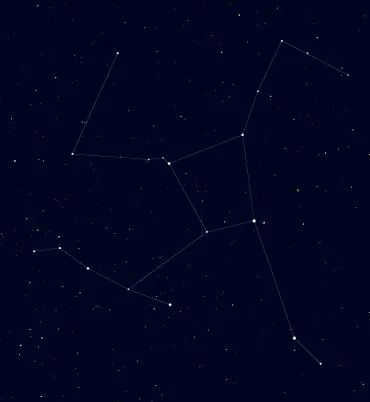
Zodiac sign Hercules
From August 20 to 24: Hercules
Located between Leo and Virgo
Elements: Fire + Earth
This zodiac sign is associated with the constellation Hercules, which is located on the border of Virgo and Leo. It is also known as Knight or Samurai, symbolizing strength, bravery, and honor. This sign is particularly favorable for men.
The duality of Hercules’ character is reflected in the calmness and practicality of Virgo, as well as the boldness and self-centeredness of Leo. Generosity coexists with stinginess, and magnanimity with pettiness. The Hercules sign is auspicious for the development of individuality, creative self-expression, and the pursuit of ambition in any field.
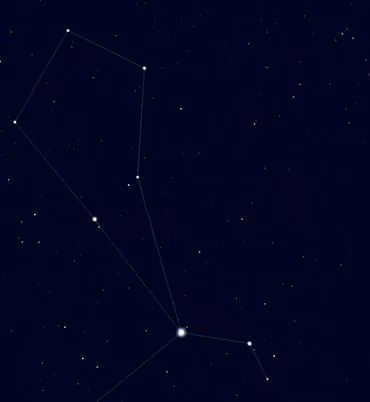
Volopassus Zodiac Sign
September 20 – 24: Capricorn
The boundary between Virgo and Libra
Elements: Earth + Air
Volopassus is the name of the constellation located between Virgo and Libra on the celestial chart. The largest star within it, Arcturus, has gained a negative reputation in the field of Astrology. However, it bestows mystical energy and magical abilities.
Volopassus is a unique combination of the practical traits of Virgo and the harmonious nature of Libra. It often results in a person who possesses both external attractiveness and a magnetic sexual aura. This individual has a strong desire for beauty, creativity, and art, and possesses excellent taste. They have the ability to transform their surroundings to reflect their aesthetic preferences. However, in some cases, the aesthetic qualities of Libra can be overshadowed by the materialistic tendencies of Virgo, leading to a personality that is highly dependent on earthly pleasures and luxuries.
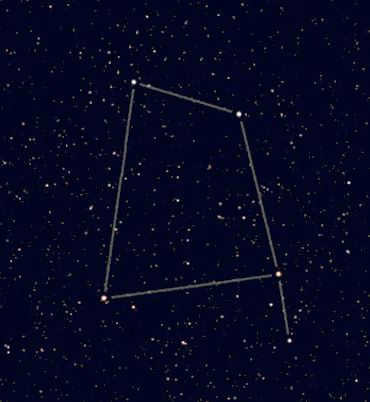
Raven Astrological Sign
From October 20 to October 24: Raven
Located on the cusp of Libra and Scorpio
Elements: Air + Water
The Raven zodiac sign is represented by the mythical bird Gamayun. Its main purpose is to maintain balance and justice, but it also has the power to destroy and cleanse. Those born under the Raven sign must be able to distinguish between good and evil, as failing to do so can lead them astray. It is also important for them to learn how to control their emotions.

Zodiac Sign Serpentine
November 20 to 24: Serpentine
Border between Scorpio and Sagittarius
Elements: Water + Fire
The Serpentine constellation represents the fateful aspect of the Zodiac. It is associated with destiny and the law of karma. The mark of the Serpentine on destiny reveals itself through numerous trials, temptations, and challenges along the journey. However, it also grants a powerful energy to overcome them.
Thanks to their strong character and self-awareness, those born under the Serpentine sign have the ability to alter the predetermined course of events, break free from karmic bonds, and achieve a higher level of spiritual growth. Their mission is one of transformation, similar to a caterpillar’s metamorphosis into a butterfly.
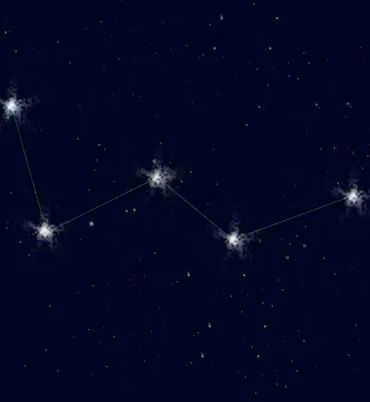
Zodiac Sign Tree
From December 19 to December 23: Tree
Sagittarius and Capricorn border
Elements: Fire + Earth
The Tree represents the constellation Cassiopeia, which is situated between Sagittarius and Capricorn. It symbolizes the axis of creation, the connection between the Upper and Lower World. At the earthly level, it governs genetics, the family tree, and the connection with ancestors.
Those individuals born under the Tree sign possess a unique combination of the Sagittarius’ optimism and openness, as well as the Capricorn’s pessimism and isolation. The element of Earth in their chart serves to temper the Fire’s ardor, curbing their desire for expansion and growth. The primary purpose of those born under the Tree sign is to conquer boundaries, embark on a journey of self-discovery, and amass a wealth of experience and knowledge to share with others, particularly in their later years.
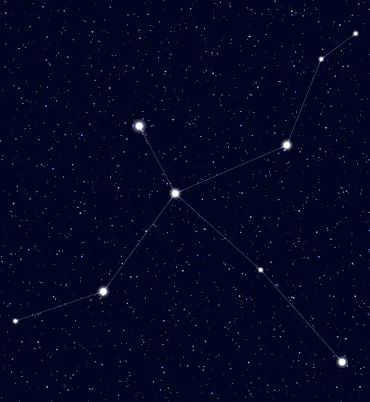
The Zodiac Sign of Sphinx
Sphinx is the zodiac sign that falls between January 18 and 22, right on the border of Capricorn and Aquarius. It is influenced by both the Earth and Air elements.
The Sphinx is associated with the constellation of the Swan or Eagle, which has a cross-like shape representing the four cardinal directions. This mythical creature combines the characteristics of a lion, a man, a bull, and an eagle, symbolizing the blend of animalistic and intelligent human nature.
The Sphinx remains an enigma, yet to be unraveled, as evidenced by numerous interpretations. It could be said that individuals born under this celestial sign are destined to embark on a lifelong quest for the essence of existence or communion with the uncharted and inscrutable. Those associated with the Sphinx are granted entry into the enigmatic realms of the cosmos. The forward-thinking influence of the air element in Aquarius enables you to make groundbreaking discoveries, while the steadfast determination and meticulousness of Capricorn aids in developing concepts and theories that can be comprehended by others.

Zodiac Sign Pegasus
From February 18 to February 22, individuals born under the sign of Pegasus find themselves on the border of Aquarius and Pisces. They are influenced by both the elements of Air and Water.
While the constellation of Pegasus is now commonly referred to as the constellation of Andromeda, the mythical Pegasus remains a symbol of inspiration for poets. Pegasus, the Winged Horse, represents a proud and indomitable spirit. This spirit is reflected in the freedom-loving nature of Aquarius and the dreaminess of Pisces, symbolized by the horse’s wings that allow it to soar above the transient world.
Those born under the sign of Pegasus tend to be free from material concerns and possess a great deal of creative energy. It is important for them to understand and embrace their inner impulses, and metaphorically ride their horse of destiny.

This weekend brings a fresh addition to the big screen with the arrival of the French animated film “Lady Bug and Super Cat: The Force Awakens”. Alongside this, audiences can also look forward to the release of the dramedy “Like Stars”, the thrilling “Only You and I”, the Russian drama “Witness”, and the captivating movie about Vladimir Mayakovsky titled “Motyl. Light. Flame. Dust.” In this article, “Izvestia” presents a comprehensive guide to the movies that are definitely worth a trip to the cinema for at the end of the week.
“Lady Bug and Super Cat: The Force Awakens.”
6+ Directed by Jeremy Zag. Starring: Anouk Otbois, Benjamin Bolen, Antoine Thomé, Fanny Bloch, Jeanne Chartier, Marie Chevalot, Flora Caprelan, Thierry Kazazian, Jesse Lambotte, Marsal Leminou.
The official distribution of the French animated film started on August 17th, but for more than a week “Lady Bug” has been shown in preview format in theaters. And during this time, the animation has been topping the box office in Russia. The new film is based on the popular superhero animated series that has been released since 2015 and has won multiple industry awards. The franchise has been so successful that it now includes collectible figures, comic books, video games, and a musical. Now, a full-length feature film has been added to the list of merchandise.
The story revolves around Marinette and Adrien, two French high school students who are bestowed with special talismans that grant them the ability to transform into superheroes. They must embrace their newfound responsibilities as the protectors of their city. Their main adversary is Braznik, a villain who harnesses the negative emotions of people to create menacing monsters. This animated series spans five seasons and boasts over a hundred episodes. The creators were so confident in its success that they allocated around €80 million for its production, making it one of the highest-budgeted projects in French cinema. “The Force Awakens” also incorporates musical elements, featuring more songs than many Disney animations.
“Similar to the celestial bodies”
18+ Directed by: Maria Leuter. Starring: Natalia Zemtsova, Nadezhda Ivanova, Julia Snigir, Gela Meskhi, Vasily Brichenko, Timur Badalbeyli.
“Similar to the celestial bodies” is the first full-length film by Maria Loiter. This comedy received the Audience Sympathy Award at the “Spirit of Fire” festival. The movie is inspired by the memories of Natalia Zemtsova and Nadezhda Ivanova, who play the main roles. It depicts their shared life in a rented apartment, including conflicts, reconciliations, and more. However, it should not be considered a biographical film, as the character traits of many individuals are exaggerated, and certain events are dramatized.
Sonya, an aspiring and ambitious actress, has her sights set on conquering Moscow and eventually Hollywood. Her ambitious goals are motivated by her age, as she is already in her thirties and has yet to achieve any level of fame. Initially, Sonya’s attempts to find work in the capital city are unsuccessful, but everything changes when she crosses paths with Masha, a reserved and insecure individual who works as a voice-over artist for cartoons. The two women quickly become friends and find success in their respective careers. However, the true test lies in whether they can handle the pressures of fame. Ultimately, their journey becomes a classic tale of conflicting friendship, reconciliation, and overcoming obstacles on the path to their dreams.

“Just You and Me”
18+ Valerie Donzelli is the director of this film, which features Virginie Efira, Melville Poupaud, Dominique Reymond, Roman Borinzhe, Virginie Ledoyen, Marie Rivière, Nathalie Richard, and Philippe Juchan in starring roles.
The thriller had its premiere at the prestigious Cannes Film Festival in 2023. Upon its release, the film quickly made its mark, entering the top 5 ranking of box office receipts in France during its opening weekend. It held its own against blockbuster giants like “Fast and Furious 10,” “Guardians of the Galaxy: Part 3,” and even “The Little Mermaid.” This gripping movie is based on a popular novel of the same name, which was published in 2014 and managed to sell an impressive 140 thousand copies. The talented team behind the film includes industry experts such as Audrey Couch, the winner of the esteemed “Golden Lion” award, who worked on the script. The composer, Gabriel Yared, also adds his expertise, having won an “Oscar” for “Best Soundtrack” for his work on the film “The English Patient.” In the leading role, we have the talented Virginie Efira, who has already earned the prestigious French film award, the “Cesar,” for her outstanding performance as “Best Actress.” With such a stellar cast and crew, audiences can expect nothing less than a high-quality cinematic experience.
Blanche, a solitary educator, has a chance encounter with her former classmate Greg, leading to a passionate romance, followed by a seaside wedding and the birth of their child – a perfect idyll. However, circumstances force the couple to relocate to northern France for work, and Greg’s love transforms into an obsession and controlling behavior. Blanche must now make a difficult decision: prioritize her family or pursue personal fulfillment, choose between freedom or enduring a cruel form of love.
“Witness.”
18+ Directed by David Dadunashvili. Starring: Karen Badalov, Julia Afanasyeva, Alexander Dyachenko, Oleg Komarov, Serafima Nizovskaya, Dmitry Blokhin, Victor Rakov, Vladimir Lityshev, Karina Reuka.
“Witness” is the inaugural Russian full-length film revolving around the SWO. It was helmed by the creator of the crime-comedy series “Restaurant on Concepts,” and the screenplay was collaboratively developed by Sergei Volkov, a member of the “Velikaya” show. While the movie draws inspiration from the tragedies in Kramatorsk, Bucha, and the Mariupol maternity hospital, it is not a documentary, as the authors introduced fictional elements. The lead role was brilliantly portrayed by Karen Badalov, an Honored Artist of the Russian Federation and a prominent figure in the Fomenko Theater.
Arriving in Ukraine in February 2022, Daniel Cohen, a talented violinist from Belgium, embarks on a tour that takes an unexpected turn. As fate would have it, his visit coincides with the commencement of a significant military operation, thrusting him into the heart of the village of Semidveri. In this war-torn setting, Daniel is confronted with unimaginable horrors, witnessing bloody crimes and encountering provocative acts orchestrated by the Armed Forces of Ukraine (AFU). Determined to survive and bring the truth about the ongoing turmoil to the world, he must navigate through the treacherous landscape of war while upholding his mission.

“Moth. Light. Flame. Dust.”
18+ Directed by: Vladimir Arshinin. Starring: Evgeny Bulavkin, Andrei Zlobin, Alla Onopher
On July 19, the 130th anniversary of Vladimir Mayakovsky would have been celebrated, and a film is being released in honor of the poet’s anniversary. The initial screening took place on July 18 at the “October” cinema, and now the movie is finally reaching a wider audience. Prior to this film, Vladimir Arshinin directed the short film “The Thousand-Year-Old Babka”, which received three nominations at the East European International Film Award (EEIMA): Best Short Film, Best Cinematography, and Best Editing. “Moth. Light. Flame. Dust.” is part of the “More Than” project, which aims to develop and popularize contemporary poetry.





